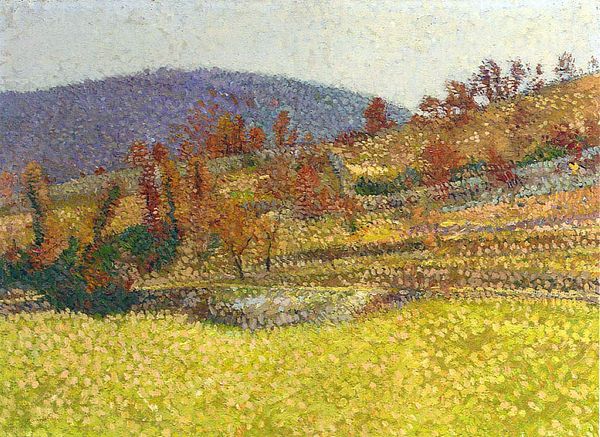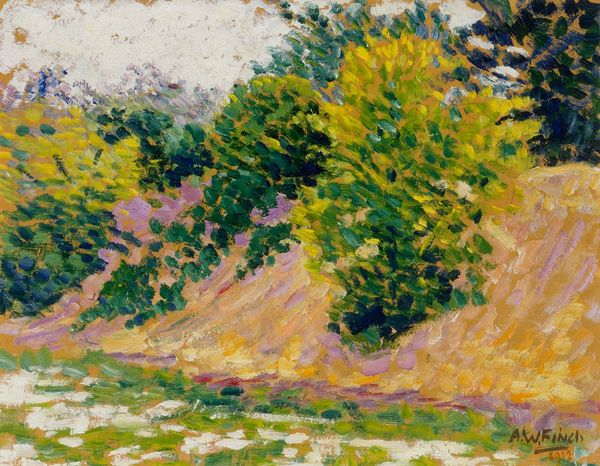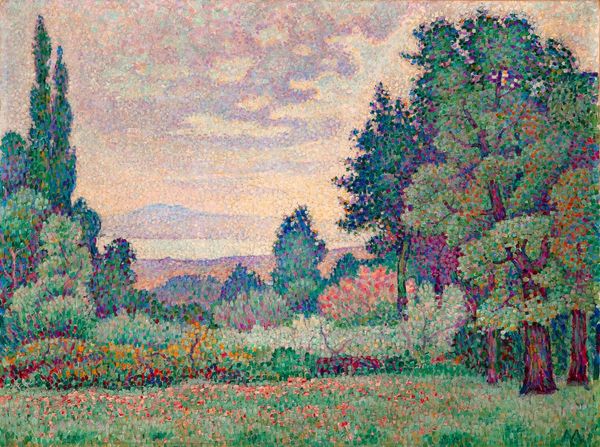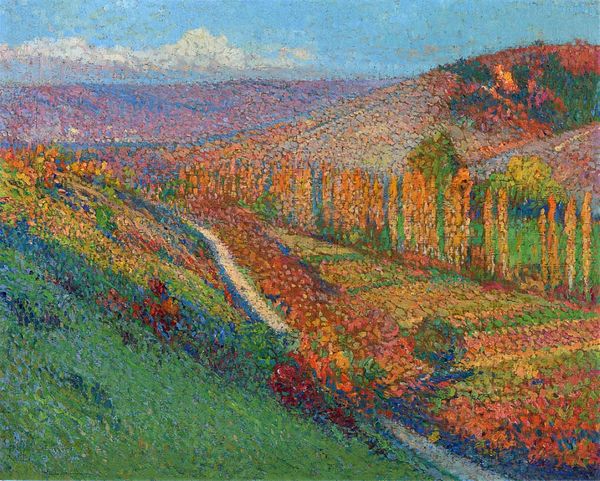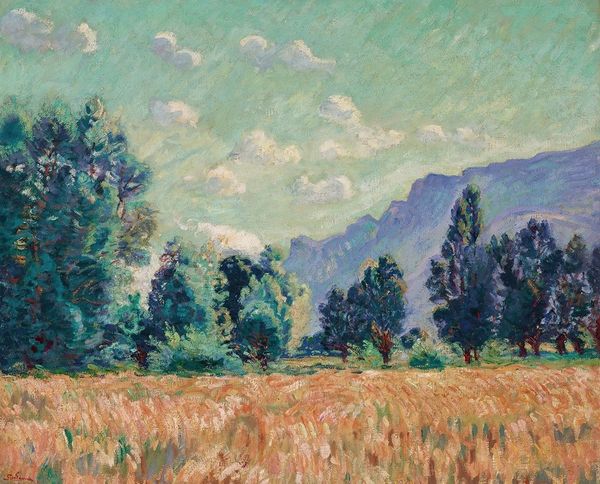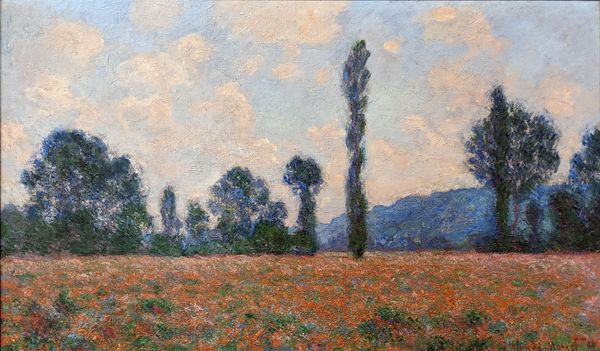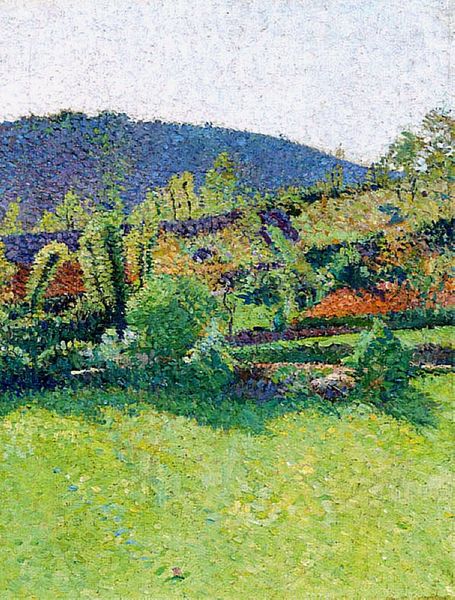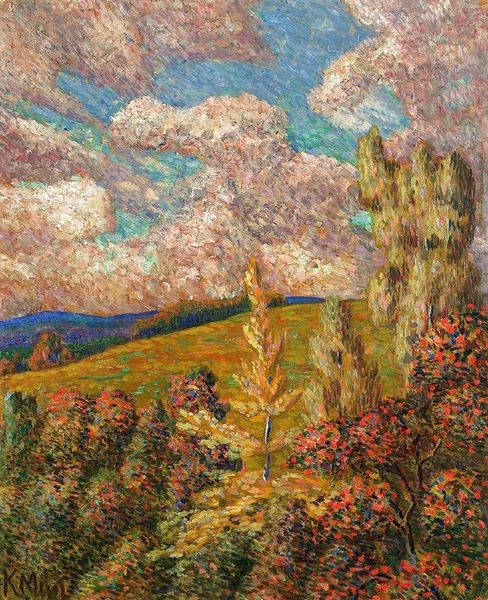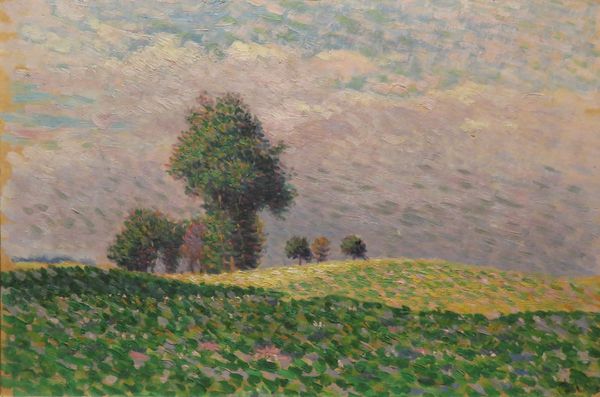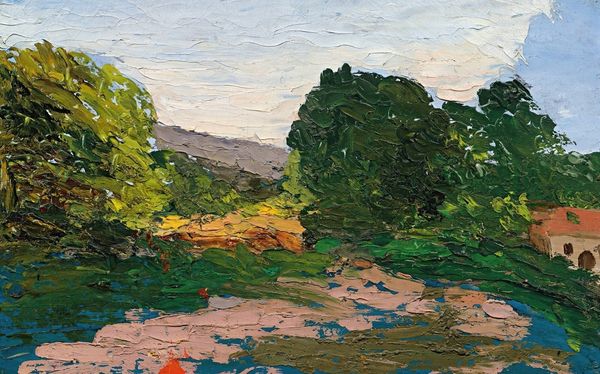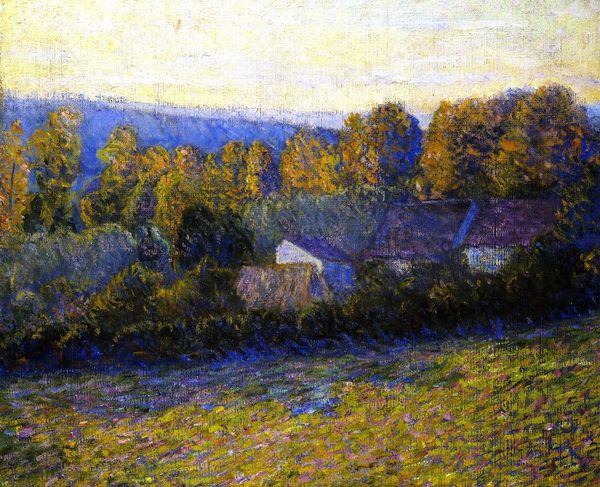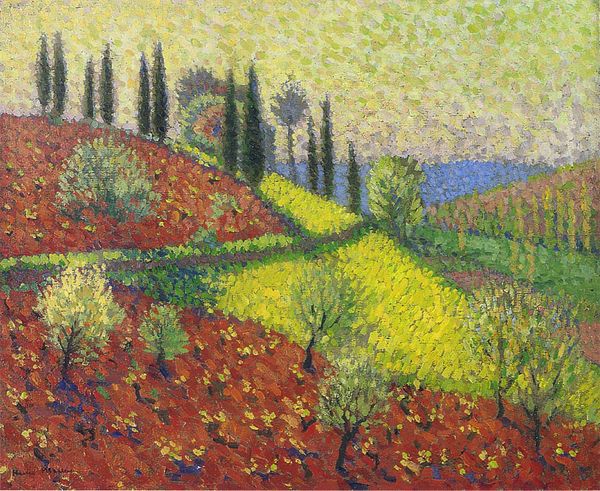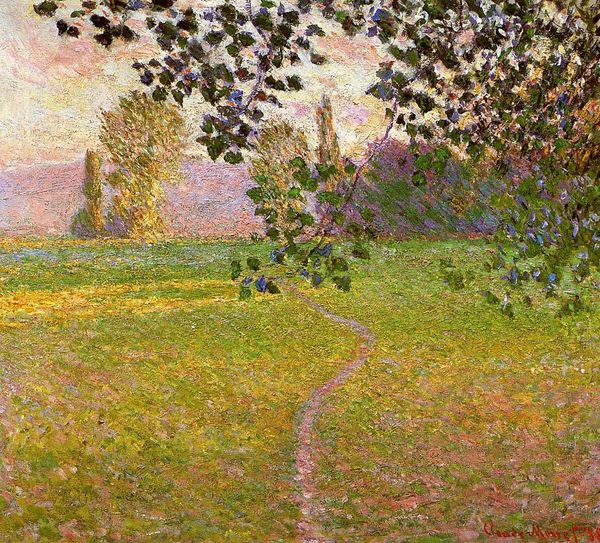
divisionism, tempera, painting, plein-air, oil-paint
#
divisionism
#
tempera
#
painting
#
impressionism
#
plein-air
#
oil-paint
#
landscape
#
impressionist landscape
#
figuration
#
genre-painting
#
post-impressionism
Copyright: Public Domain: Artvee
Emile Bernard made this painting, ‘Two Breton Women in a Meadow,’ using an impressionist style which captures a casual moment in rural France. Bernard lived between 1868 and 1941, a period of significant social change. He was deeply immersed in debates around tradition, identity, and modernity. The work foregrounds two women in traditional Breton clothing, a potent symbol of regional identity in a rapidly modernizing France. The choice to depict women is significant. Rural women were often seen as the embodiment of regional customs. This brings forward questions of cultural preservation and the role of women as guardians of tradition. Bernard, along with artists like Gauguin, sought to move beyond the purely optical impressions, and this painting reflects a search for deeper cultural and spiritual meanings. What does it mean to look back to regional and rural life in times of great transformation? What aspects of a slower, agrarian existence are worth preserving?
Comments
No comments
Be the first to comment and join the conversation on the ultimate creative platform.
